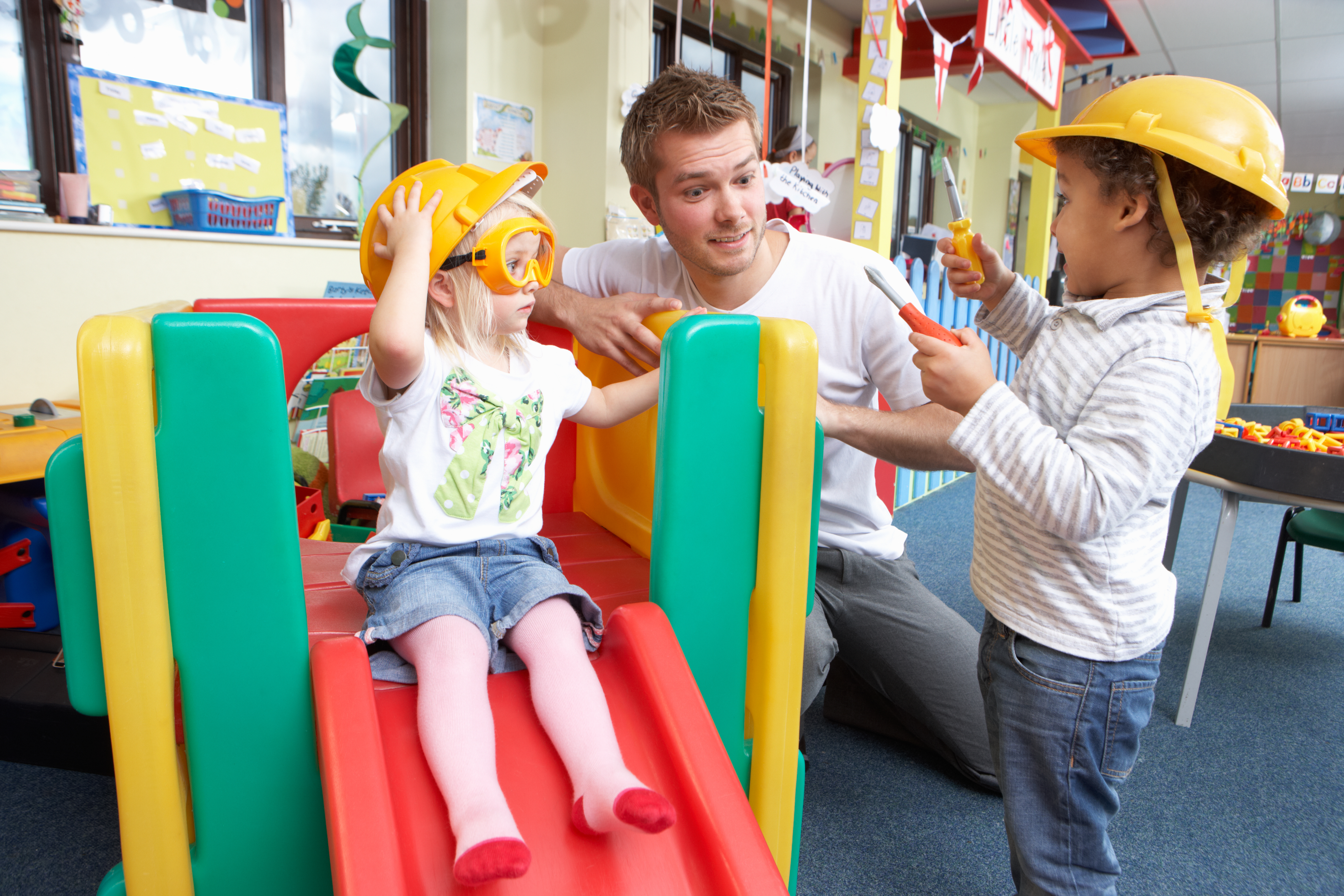 Indoor environments that are kept safe through an ongoing system of preventive maintenance help ensure that children grow and learn safely. Preventive maintenance includes routine safety checks of all areas within a center (e.g., halls, socialization spaces, and classrooms) or the family child care home, including toileting/diapering areas and feeding areas.
Indoor environments that are kept safe through an ongoing system of preventive maintenance help ensure that children grow and learn safely. Preventive maintenance includes routine safety checks of all areas within a center (e.g., halls, socialization spaces, and classrooms) or the family child care home, including toileting/diapering areas and feeding areas.
Identifying risks and removing hazards can prevent injuries before they happen, allowing children to safely engage in learning.
Immediately address any hazards as soon as they are identified. Then submit a maintenance report regarding the findings. Follow up to make sure repairs have been made or the hazard has been eliminated as quickly as possible.
Conduct safety checks in all program settings regularly. Remember to check for small, easy-to-miss hazards, including:
- Things that could lead to burns, heat stroke, frostbite, electrocution, cuts, bruises, broken bones, and choking
- Chemicals that could lead to poisoning or burns
- Animals or insects that could lead to bites, poisoning, stings, and infections
- Structural damage that could lead to cuts, bruises, and falls
- Floors and carpeting with tears, cracks, dampness, splinters, sliding rugs, and loose cords that could be trip hazards
The placement of equipment and furnishing can make a big difference in preventing collisions, ensuring proper supervision, and permitting freedom of movement by the children. Equipment, materials, furnishings, and play areas should be sturdy, safe, and in good repair and should meet the recommendations of the U.S. Consumer Product Safety Commission (CPSC) for elimination of the following safety hazards. Look for a CPSC label or statement that the equipment complies with U.S. CPSC requirements.
Safety hazards to look for in furnishings and equipment include:
- Openings that could entrap a child’s head or limbs
- Elevated surfaces that are inadequately guarded
- Lack of specified surfacing and fall zones under and around climbable equipment
- Mismatched size and design of equipment for the intended users
- Insufficient spacing between equipment
- Tripping hazards
- Components that can pinch, shear, or crush body tissues
- Equipment that is known to be of a hazardous type
- Sharp points or corners
- Splinters
- Protruding nails, bolts, or other components that could entangle clothing or snag skin
- Loose, rusty parts
- Hazardous small parts that may become detached during normal use or reasonably foreseeable abuse of the equipment and that present a choking, aspiration, or ingestion hazard to a child
- Strangulation hazards (e.g., straps, strings)
- Paint that contains lead or other hazardous materials or is flaking
- Tip-over hazards, such as chests, bookshelves, and televisions
Obtain equipment that can eliminate or reduce injury. This includes safety gates, electrical plug covers, bicycle and tricycle helmets, smoke alarms and carbon monoxide detectors, appropriate types and amounts of surfacing on floors, and locks on cabinets and doors.
Inspect all equipment and furnishings on a regular basis. If equipment and furnishings need repair and are no longer safe, remove them from all areas that children can access. Ensure staff are checking for recalls of toys and equipment on a regular basis. You can access a list of recalls or subscribe to receive email notifications of recalls from the CPSC.
Staff may experience injuries, too. Consider ways to set up spaces to minimize the risk of back injuries. For example, provide furniture that minimizes the need for bending, lifting, and carrying heavy children and objects. Back strain can arise from adult use of child-sized furniture. Place adult furniture in all areas where adults work, meet, or take breaks.
Staff need ready access to safety supplies such as fully stocked and operable first aid kits, fire safety supplies, and emergency medication, and the training to use these supplies. Make sure that staff are trained and certified in first aid and CPR according to state, territorial, or tribal regulations.
Tips and Strategies for Maintaining Safe Indoor Environments
- Read the Tips for Keeping Children Safe guide to learn more about how to implement safety practices based on the developmental level of the children in the program.
- Encourage staff to lie down or sit on the floor in the areas that children use. Ask them what they see that children can reach, grab, pull on, or climb. Are there “hidden” hazards that should be addressed? For example, look for:
- Furnishings placed in such a way as to create large runways in areas where running is not safe
- Furnishings that allow children to climb in locations where climbing is not safe
- Equipment (e.g., shelving) and heavy items (e.g., televisions) that are not anchored in place to the floor or wall
- Access to rooms (e.g., kitchen) or spaces (e.g., storage) where children are prohibited
- Rooms or buildings where children may easily wander out
- Use the California Childcare Health Program Health and Safety Checklist, based on the CFOC, to identify ways to improve safety in your program. This checklist is available as a fillable form or PDF in English, Spanish, and Chinese.
Read more:
Resource Type: Article
National Centers: Health, Behavioral Health, and Safety
Audience: Directors and Managers
Last Updated: October 30, 2023